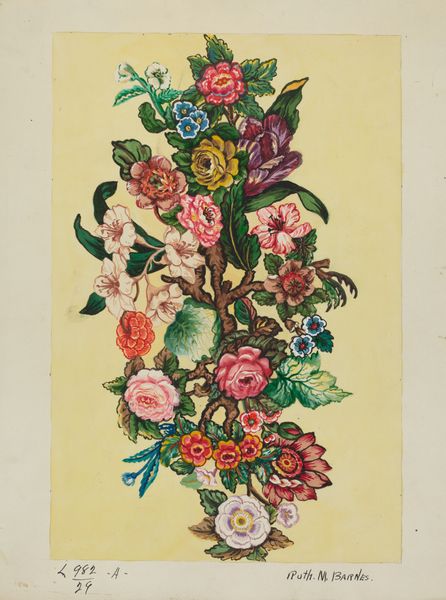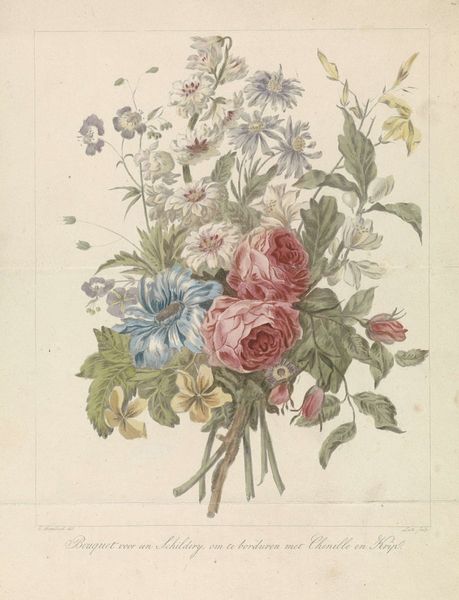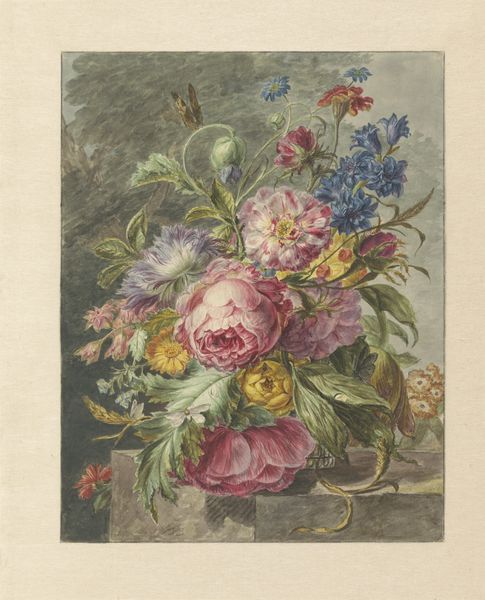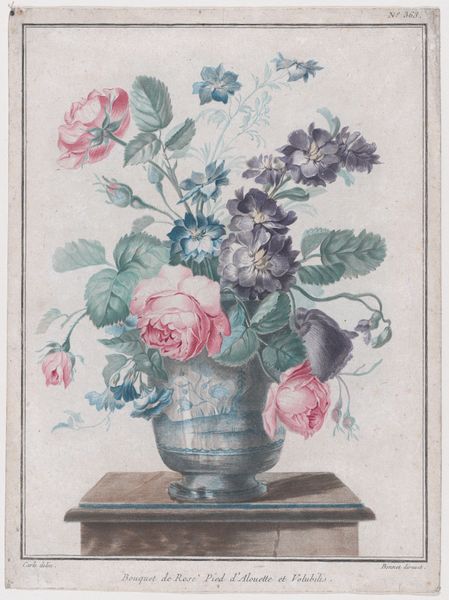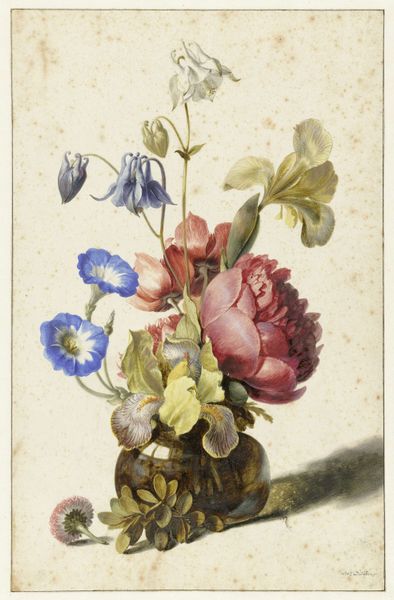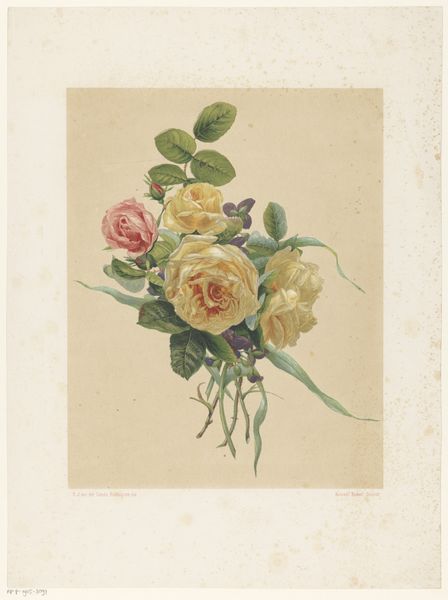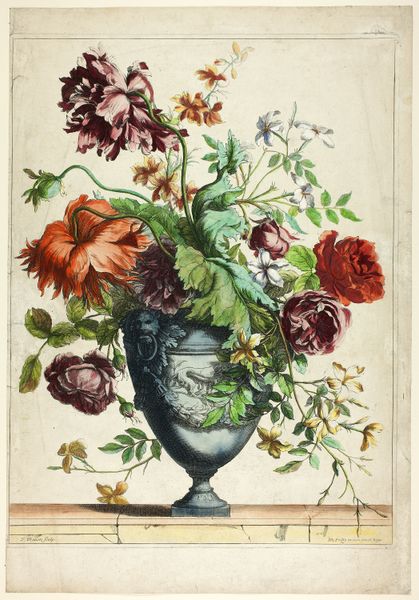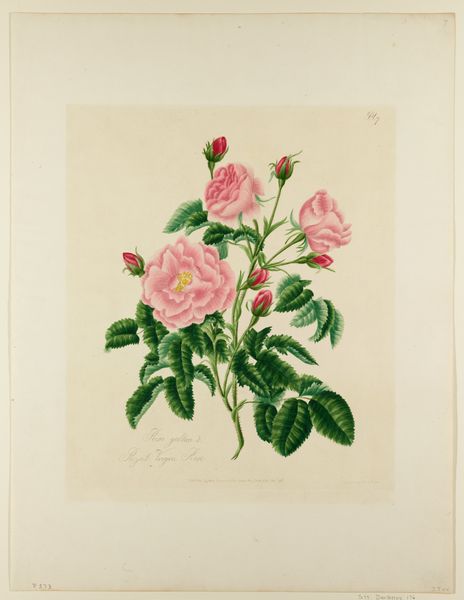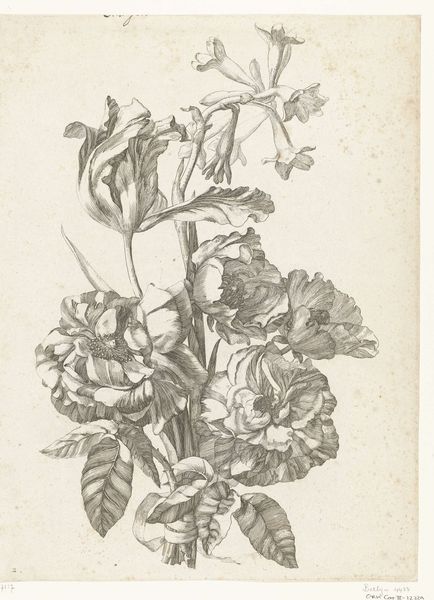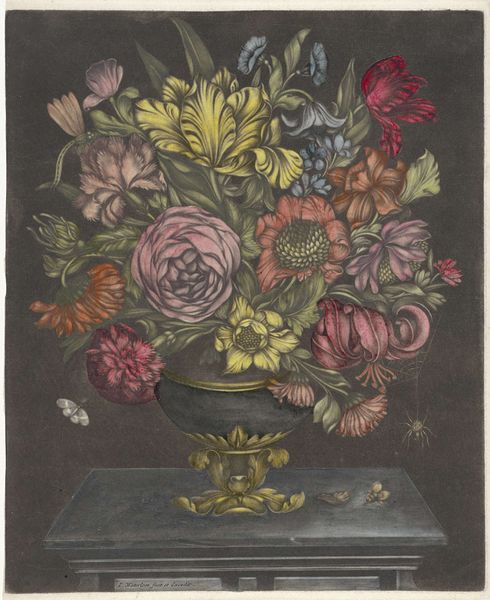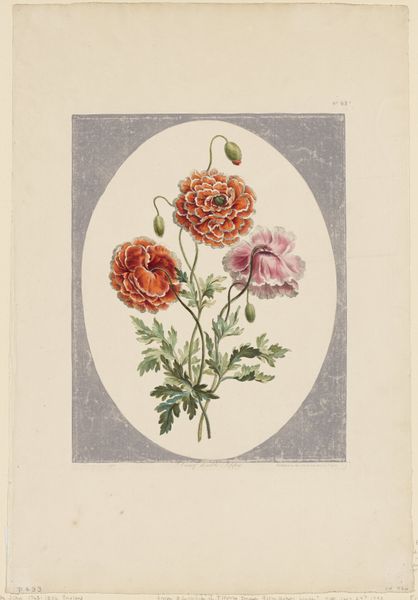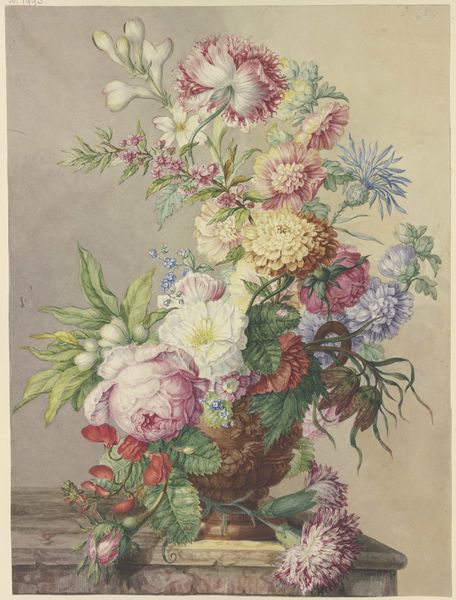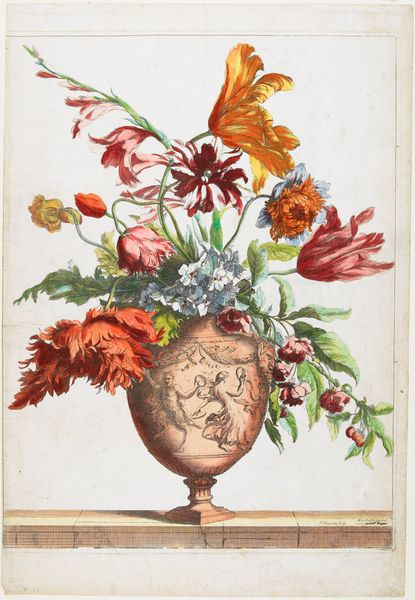
print, etching, oil-paint, paper
#
narrative-art
#
baroque
# print
#
etching
#
oil-paint
#
paper
#
oil painting
#
france
#
watercolour illustration
Dimensions: 280 × 216 mm (plate); 300 × 230 mm (sheet)
Copyright: Public Domain
Curator: Looking at this, the first thing that strikes me is its density and stillness. It feels incredibly self-contained, almost hermetic. Editor: Precisely! Here we have “Vase of Flowers,” a print from 1660 by Jean-Baptiste Monnoyer, now at The Art Institute of Chicago. Monnoyer, a French artist, played a pivotal role in establishing floral still life as a respected genre, particularly within court circles. His works, frequently commissioned for tapestry designs, were highly sought after during the reign of Louis XIV, reflecting the period's love for elaborate decoration. Curator: You mentioned decoration—indeed. But what speaks to me, is the structure of this. How would you describe the chromatic relationships in this print, the interplay between colors, light and shadow? Notice the arrangement—dark, jewel-toned blooms nestled amongst vibrant greens and softer blossoms, almost symmetrically distributed. It's balanced, yet lively. Editor: Floral imagery in the 17th century had powerful social and political connotations. Flowers from different seasons assembled together, while seemingly innocuous, served to demonstrate the commissioner’s access to global trade and thus a dominion over nature, reflecting an assertion of power through possessions. The act of displaying a cut flower arrangement itself symbolized control over the fleeting nature of beauty and wealth. Curator: Interesting, but tell me, beyond its context as a signifier of wealth, look at the medium—printmaking, etching particularly—the lines creating tonality. How do you think the translation from Monnoyer’s original, probably an oil on canvas, altered the message, or emphasized some other feature of the work? It feels much more accessible now. Editor: By disseminating floral imagery, the print version could also act as a sort of aspirational consumer good, something available to wider audiences to admire and potentially emulate through gardens or other domestic arrangements. The reduced scale and replicated form allowed for these complex visual symbols of social power to circulate widely, influencing broader decorative tastes. Curator: Thinking about the details of each flower though, the meticulous observation combined with an almost scientific attention to texture is masterful. I would describe its aesthetic, by current standards, as understated and calming. Editor: Perhaps the understated feel to it now underscores a crucial distinction; for 17th century French society, it signaled status through accessible artistic imitation on paper. The fact that it has persisted as something visually pleasing tells of a deeper understanding of form.
Comments
No comments
Be the first to comment and join the conversation on the ultimate creative platform.
